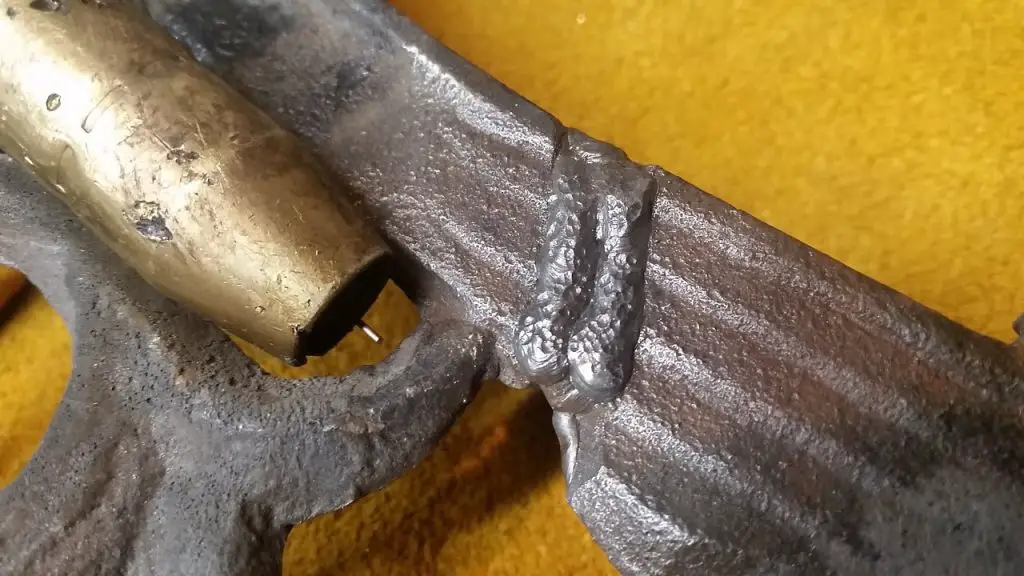MIG welding primarily utilizes DC (Direct Current) for its process, ensuring stable arcs and superior weld quality. Although some TIG welders may use DC, it’s crucial to note that MIG welding is exclusively DC-based, unlike other welding methods which may offer both AC and DC options.
One important thing you must remember when welding is the current type. There are two types of currents: Alternating Current, or AC, and Direct Current, or DC. They have very different applications for welding, which is why it is important to know when to use these types of currents.
MIG welding machines are usually designed to be compatible with both types of currents. They mostly use DC currents, which are more common across the board for more modern welding machines. However, you can switch to AC currents for MIG welding for certain applications.
MIG welding is an easy technique once you set up the machine properly. Part of the set-up means using the right current. This guide can help you understand the ins and outs of using AC or DC current for MIG welding.

Table of Contents
What Is Alternating Current?
Alternating current is one of the most important terms you need to know as a beginner welder. Alternating current, or AC, is a type of electrical current where the electrodes change direction multiple times a second. That means the polarity of the current also changes with each moment. AC current usually comes from a power source such as a wall socket.
In welding, alternating current is used for very specific applications, including:
- Aluminum welding
- Welding very thick or very thin materials
- Welding magnetic materials
What Is Direct Current?
The other major type of electrical current is direct current, or DC. In direct electrical currents, the electrodes flow in one continuous direction without switching. Direct currents can either be positive or negative in polarity. They don’t switch polarity as alternating currents do.
Direct current is more common among modern welding machines for several reasons (more on this later).
AC vs DC in MIG Welding
We’ve discussed the applications of AC and DC current in general welding, but what about MIG welding?
Like most welding machines, MIG welders usually use DC current. However, these MIG welding machines can usually support all three main current types with slight adjustments to the settings.
In order of frequency, the types of currents MIG welders can support are:
- DCEP or DCE+ (Direct Current Electron Positive)
- DCEN or DCE- (Direct Current Electron Negative)
- AC (Alternating Current)
Why Are MIG Welders Typically DC?
There are a few reasons why MIG welders, and most modern welding machines in general, are typically oriented towards DC current.
MIG welders prefer DCEP current over DCEN for a few different reasons. The negative polarity does not interact well with the MIG welding machine, creating lower penetration, an unstable arc, and even arc outages. For welding, you want stability and get the most of that with DCEP current when MIG welding.
Arcs With DC Current Are More Stable
Since the electrons are not constantly switching direction, arcs made up of DC current electricity are far, far more stable than AC currents. This gives the welder more control over the direction of the weld and the power. This is very important, especially for welding out of position or when you’re welding as a beginner.
DC Current Welds Are Neater
When you have more control over the arc, the result is very visible on your weld. The weld quality is much better with DC current welds. The bead is very smooth and transfers neatly to the metal. Cleaning up after welding is also much easier because there is less splatter when you have more control over the arc. The greater stability of DCEP currents are the best option when you are working with a MIG welder.
When Would You Use AC When MIG Welding?
Although DCEP is the most common type of current you use with MIG welding, there are a few instances when you want to switch to AC current.
AC current’s main advantage over both types of DC currents is that it constantly swaps polarity. Since the electrons constantly switch directions, it has moments when its polarity is zero. That makes it easier to weld magnetic metals that have their own polarity.
Direct currents also interact poorly with oxidation, which forms when you weld non-ferrous metals such as aluminum. AC current works best for those metals.
Finally, AC welding holds up better to higher temperatures, which you need to weld thicker metals or create deeper, thicker-penetrating joints. It is also more affordable, making it easier to get AC current equipment when you’re just starting out.
Final Thoughts
Like most modern welding machines, MIG welding machines primarily use DC current because it provides a more stable arc. Specifically, MIG welding machines use DCEP current as negative polarity interacts poorly with the machine. You can sometimes use AC current for MIG welding, for example, magnetic metals.
